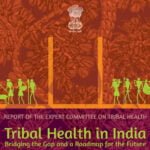Poshan Abhiyaan is a mission launched in India with the objective of improving the nutritional status of children (0-6 years), adolescent girls, pregnant women, and lactating mothers. It adopts a target-based approach and aims to tackle malnutrition through a comprehensive and converged effort. The mission focuses on achieving specific targets, including reducing stunting, under-nutrition, anemia among children and women, and low birth weight.
To achieve its goals, Poshan Abhiyaan emphasizes the convergence of various schemes and interventions related to malnutrition. Convergence committees have been established at different levels, and an ICT-based Real-Time Monitoring tool has been introduced. This tool utilizes mobile applications and a web-based dashboard to monitor and review the implementation of schemes. Additionally, community mobilization and behavior change communication play a crucial role in creating awareness and promoting positive nutritional practices. Community-based events, information campaigns, and a \”Jan Andolan\” initiative involving public participation are integral components of this approach.
Training and capacity building of frontline workers are also prioritized through the Incremental Learning Approach. This approach focuses on continuous learning through workshops and specific modules. The mission encourages innovations and performance incentives to enhance service delivery, capacity building, and community engagement for better nutritional outcomes. Successful pilot projects may be scaled up, and states achieving targets will be incentivized. Furthermore, citizen engagement and a grievance redressal mechanism are established to ensure beneficiary participation and timely resolution of issues.
Poshan Abhiyaan seeks to address the issue of malnutrition by integrating various interventions, promoting behavior change, and monitoring progress in real-time. The mission aims to improve the nutritional status of vulnerable populations through a multi-dimensional and collaborative approach involving government agencies, frontline workers, communities, and individuals.
SOURCE: Maharashtra WCD


